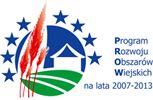Jaświły
‘Our Amazon Jungle’ – this is how the residents of Gmina Jaświły describe the Biebrza River and its surrounding area. This land, located between the Middle Biebrza Basin and its tributary, the Brzozówka, is connected with the Biebrza in terms of nature and history. In the northern part of the gmina there is the Biebrza Valley with a vast swamp area spreading as far as Woźnawieś near Rajgród. The most natural peat bog complexes in Central Europe are located here. From 1993, the land belongs to the Biebrza National Park.
Natural and scenic conditions of the Jaświły Land are shaped by the rivers: Biebrza in the north, Nereśl – Biebrza’s tributary – in the south-west and Brzozówka which closes the territory of the gmina from the east. Natural values and a typical agricultural character of this area, the vicinity of natural treasures of the Biebrza swamps, interesting hiking and water trails make this place attractive for tourists. It is also quite close to the Red Marsh Nature Reserve and ‘Grzędy’ Sacred Forest – the most interesting and wildest places in the Biebrza National Park. Here you can find refugia of elk, wolves, lynx, and rare bird species including greater spotted eagle. You can also admire unique peat bog complexes with precious species of primary marsh plants.
Tourists can use numerous guest rooms in the villages of Zabiele, Borówka, Szpakowo and, most of all, Dolistowo Stare – an agritourism village, picturesquely situated directly by the Biebrza, where you can admire an uninterrupted view of the Biebrza swamps. Dolistowo is one of the oldest villages in the gmina (formerly known as Targowisko) – according to historic chronicles it was the place where a Christian missionary, St. Bruno of Querfurt, who came here to convert the local tribes of Yotvingians, Prussians and Balts, was decapitated by pagans. In times of the expansion of the Teutonic Knights in this area, the Teutonic Order presumably built the Meteburg fortress (from the word ‘Meta’ – the former name of the Netta River) here, in Dolistowo. It was supposed to guard the crossing of the Biebrza, as Dolistowo Stare was a border village between Rus’ and Prussia, located in the area where the Netta flows into the Biebrza. Only the construction of the Augustów Canal in the 19th century moved the place where the two rivers meet farther east, to the village of Dębowo by the Biebrza, where the first lock on the canal was built. The area near Dolistowo was a favourite hunting ground for Casimir Jagiellon, and at the same time a subject of a dispute between him and the Radziwiłł family, according to the local court records from the 16th century.
The Jaświły Land has a very diverse history, the traces of which remained in today’s monuments. Several hundred years ago Yotvingian tribes reached this area called the borderland, from the north. The remains of their presence can be observed in the present names of towns and villages: Jaświły, Jaświłki, Jaćwieź, Jadejki, Romejki, Mociesze, Gurbisze. Jaświły and the surrounding swamp were first mentioned in the 15th century.
Several most attractive Biebrza trails for tourists run across Gmina Jaświły. One of them is over 180 km long and leads us across the Biebrza ‘Amazon Jungle’ (a part of this trail runs along the so-called ‘Tsar’s Road’): from Morgowniki, through Wizna, Osowiec, Dolistowo, Dębowo, Trzyrzeczki, to Lipsk. You can admire the Osowiec Fortress and nature around the Biebrza. A 65-kilometre-long bicycle trail from Suchowola to the Osowiec Fortress runs from the Knyszyn Primeval Forest to the Biebrza National Park. In Dolistowo there is the starting point of a hiking trail Dębowo – Dolistowo (10.6 km) and a canoe route Dolistowo – Goniądz (16 km).
The greatest tourist attraction is canoeing rallies on the Biebrza. In the local agritourism farms you can rent canoes. Moreover, tourists and water enthusiasts can use a neat dock near the beach in Dolistowo Stare. It is a starting point of the Dolistowo – Augustów water trail. Hosts offer specialties of regional cuisine (e. g. excellent honey from the nectar of herbs growing on meadows by the Biebrza, as well as cheese made of milk obtained from cows that graze in the local ecologically clean pastures) and rides in horse-drawn carriages. They also offer guided tours of the local natural attractions.
In addition to unspoilt nature and the ‘breath’ of unique Biebrza swamps, in Gmina Jaświły visitors can admire interesting traces of material culture. Tourists can see historic, carved roadside crosses (near Brzozowa, Romejki, Jadeszki, Dzięciołowo, Mikicin), the remains of wonderful rural wooden architecture from the 19th and early 20th centuries (Zabiele, Dolistowo Stare) and historic windmills (Zabiele, Szpakowo, Dzięciołowo, Dolistowo). In Mikicin there is a manor complex from the mid-19th century, and in Dolistowo Stare – the Church of St. Lawrence from the 18th century, the oldest church in the gmina. In July and August, additional attractions are the local events: ‘And on Sunday after the Church Mass’ (‘A w niedzielę po kościele’) Community Folk Festival in Jaświły and ‘Linen alphabet’ (‘Lniane abecadło’) in Dolistowo – a festival presenting weaving and embroidery traditions, preserved by the folk artists from the gmina.
Natural and scenic conditions of the Jaświły Land are shaped by the rivers: Biebrza in the north, Nereśl – Biebrza’s tributary – in the south-west and Brzozówka which closes the territory of the gmina from the east. Natural values and a typical agricultural character of this area, the vicinity of natural treasures of the Biebrza swamps, interesting hiking and water trails make this place attractive for tourists. It is also quite close to the Red Marsh Nature Reserve and ‘Grzędy’ Sacred Forest – the most interesting and wildest places in the Biebrza National Park. Here you can find refugia of elk, wolves, lynx, and rare bird species including greater spotted eagle. You can also admire unique peat bog complexes with precious species of primary marsh plants.
Tourists can use numerous guest rooms in the villages of Zabiele, Borówka, Szpakowo and, most of all, Dolistowo Stare – an agritourism village, picturesquely situated directly by the Biebrza, where you can admire an uninterrupted view of the Biebrza swamps. Dolistowo is one of the oldest villages in the gmina (formerly known as Targowisko) – according to historic chronicles it was the place where a Christian missionary, St. Bruno of Querfurt, who came here to convert the local tribes of Yotvingians, Prussians and Balts, was decapitated by pagans. In times of the expansion of the Teutonic Knights in this area, the Teutonic Order presumably built the Meteburg fortress (from the word ‘Meta’ – the former name of the Netta River) here, in Dolistowo. It was supposed to guard the crossing of the Biebrza, as Dolistowo Stare was a border village between Rus’ and Prussia, located in the area where the Netta flows into the Biebrza. Only the construction of the Augustów Canal in the 19th century moved the place where the two rivers meet farther east, to the village of Dębowo by the Biebrza, where the first lock on the canal was built. The area near Dolistowo was a favourite hunting ground for Casimir Jagiellon, and at the same time a subject of a dispute between him and the Radziwiłł family, according to the local court records from the 16th century.
The Jaświły Land has a very diverse history, the traces of which remained in today’s monuments. Several hundred years ago Yotvingian tribes reached this area called the borderland, from the north. The remains of their presence can be observed in the present names of towns and villages: Jaświły, Jaświłki, Jaćwieź, Jadejki, Romejki, Mociesze, Gurbisze. Jaświły and the surrounding swamp were first mentioned in the 15th century.
Several most attractive Biebrza trails for tourists run across Gmina Jaświły. One of them is over 180 km long and leads us across the Biebrza ‘Amazon Jungle’ (a part of this trail runs along the so-called ‘Tsar’s Road’): from Morgowniki, through Wizna, Osowiec, Dolistowo, Dębowo, Trzyrzeczki, to Lipsk. You can admire the Osowiec Fortress and nature around the Biebrza. A 65-kilometre-long bicycle trail from Suchowola to the Osowiec Fortress runs from the Knyszyn Primeval Forest to the Biebrza National Park. In Dolistowo there is the starting point of a hiking trail Dębowo – Dolistowo (10.6 km) and a canoe route Dolistowo – Goniądz (16 km).
The greatest tourist attraction is canoeing rallies on the Biebrza. In the local agritourism farms you can rent canoes. Moreover, tourists and water enthusiasts can use a neat dock near the beach in Dolistowo Stare. It is a starting point of the Dolistowo – Augustów water trail. Hosts offer specialties of regional cuisine (e. g. excellent honey from the nectar of herbs growing on meadows by the Biebrza, as well as cheese made of milk obtained from cows that graze in the local ecologically clean pastures) and rides in horse-drawn carriages. They also offer guided tours of the local natural attractions.
In addition to unspoilt nature and the ‘breath’ of unique Biebrza swamps, in Gmina Jaświły visitors can admire interesting traces of material culture. Tourists can see historic, carved roadside crosses (near Brzozowa, Romejki, Jadeszki, Dzięciołowo, Mikicin), the remains of wonderful rural wooden architecture from the 19th and early 20th centuries (Zabiele, Dolistowo Stare) and historic windmills (Zabiele, Szpakowo, Dzięciołowo, Dolistowo). In Mikicin there is a manor complex from the mid-19th century, and in Dolistowo Stare – the Church of St. Lawrence from the 18th century, the oldest church in the gmina. In July and August, additional attractions are the local events: ‘And on Sunday after the Church Mass’ (‘A w niedzielę po kościele’) Community Folk Festival in Jaświły and ‘Linen alphabet’ (‘Lniane abecadło’) in Dolistowo – a festival presenting weaving and embroidery traditions, preserved by the folk artists from the gmina.










